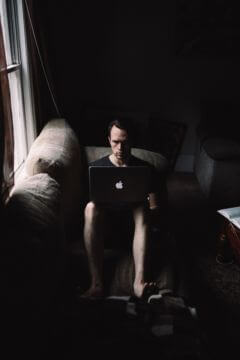Josh Bersin, founder and Principal at Bersin by Deloitte, has said what many believe but have been afraid to say out loud; HR has a tech addiction. Many organisations are resorting to implementing flashy new software where the benefits have yet to be realized.
In his recent interview with Diginomica, the leading HR Technology expert spoke out regarding the negative aspects of this booming industry which claims to solve so much.
“I believe we are in a funny cycle where the attractiveness and the addiction of the technology is bigger than the productivity enhancement of the technology.” –Josh Bersin
 Reported by Josh Bersin himself, the HR software market is worth approximately $14+ billion. Innovators and investors alike are taking notice because the allure of having your technology potentially touch every employee in the workforce seems too compelling a proposition to pass up. Today there exists a solution (possible multiple solutions) for nearly every pain point imagined in the employee lifecycle from recruitment to training to retirement.
And I dare contend that more are on the way with the new thirst for AI and Machine Learning offerings. There were over 400 exhibitors at HR Tech this year; up from 300 the year before, and in 2017, we will see an additional spike in exhibitors and equally hungry customers looking for a solution to help aid them with their skills gap conundrum.
The promise of HR technology is so appealing. The premise is deploy HR in the context of business strategy and you will close the execution gap on your desired business results. The promise of better business execution is not a new concept but behind the claims of better ROI, better customer satisfaction et al comes a basic challenge.
Each of these claims looks to “What the solution could potentially do for you”. It shy’s away from the real elephant in the room which is “How do I realise the benefits”.
Reported by Josh Bersin himself, the HR software market is worth approximately $14+ billion. Innovators and investors alike are taking notice because the allure of having your technology potentially touch every employee in the workforce seems too compelling a proposition to pass up. Today there exists a solution (possible multiple solutions) for nearly every pain point imagined in the employee lifecycle from recruitment to training to retirement.
And I dare contend that more are on the way with the new thirst for AI and Machine Learning offerings. There were over 400 exhibitors at HR Tech this year; up from 300 the year before, and in 2017, we will see an additional spike in exhibitors and equally hungry customers looking for a solution to help aid them with their skills gap conundrum.
The promise of HR technology is so appealing. The premise is deploy HR in the context of business strategy and you will close the execution gap on your desired business results. The promise of better business execution is not a new concept but behind the claims of better ROI, better customer satisfaction et al comes a basic challenge.
Each of these claims looks to “What the solution could potentially do for you”. It shy’s away from the real elephant in the room which is “How do I realise the benefits”.
“You can’t buy technology solutions and inject them into your workforce any more, unless you perform design thinking.” –Josh Bersin.
Having spent 12 years of my life dedicated to this subject, I agree. It is something that I have encountered time and time again while working with customers, and even as a customer myself, in the HR Tech space.
 There’s an elephant in the room and it’s time we acknowledge it: technology does not solve problems unless people are effective at using it. This is not about how pretty an application is nor how functionally rich it is but the need to raise the competency levels of the end user to a level where they can derive value from the technology, the tools organisations have spent vast sums of time and money implementing.
The value of any system depends on the proficiency of its users. Throwing more tech at them isn’t necessarily going to solve the issue. I would contend that by adding more functional elements merely exacerbates the issue and makes it more difficult to get the value of the entire suite of HR applications. My mother used to caution against throwing good money after bad. If only we spent the same time and energy considering how we get the workforce to use the technology as we do in the planning and preparation phases of a HR deployment.
As long as we rely on people to use technology, the learning curve will be the most significant challenge to gaining the productivity benefits we hope for. This is why Bersin advocates for technology that is designed for the end user rather than the administrator.
There’s an elephant in the room and it’s time we acknowledge it: technology does not solve problems unless people are effective at using it. This is not about how pretty an application is nor how functionally rich it is but the need to raise the competency levels of the end user to a level where they can derive value from the technology, the tools organisations have spent vast sums of time and money implementing.
The value of any system depends on the proficiency of its users. Throwing more tech at them isn’t necessarily going to solve the issue. I would contend that by adding more functional elements merely exacerbates the issue and makes it more difficult to get the value of the entire suite of HR applications. My mother used to caution against throwing good money after bad. If only we spent the same time and energy considering how we get the workforce to use the technology as we do in the planning and preparation phases of a HR deployment.
As long as we rely on people to use technology, the learning curve will be the most significant challenge to gaining the productivity benefits we hope for. This is why Bersin advocates for technology that is designed for the end user rather than the administrator.
“Digital doesn’t mean just building apps, but creating experiences that fit to work in a way that’s useful to the employees.” –Josh Bersin
In order to be useful, an end user must have the support mechanism, a coach of sorts who can help them with how to engage and leverage the application. SAP-SF has pushed the notion of continuous performance management. If we were to extend on this, why should an employee wait for a review even if it is more regular. Why can’t they have that coaching on demand?
This is our mission at WalkMe. We set out to help users, employees, managers, the entire company, engage better with digital platforms with a view to better adoption, productivity and self. This is the reason I have pivoted my career to begin building this bridge for companies who experience this notion of HR tech addiction.
 WalkMe is the digital equivalent of having someone stand over your shoulder to explain, coach and guide an employee through a process but on demand. It has been proven to decrease number of errors, improve efficiency, reduce support tickets and increase employee engagement.
Increasingly, the answer has been WalkMe. WalkMe’s CEO, Dan Adika, recently commented on the company’s impressive place on the Deloitte’s Fast 500 ranking crediting his employees and the fact that WalkMe is answering the exponentially growing industry need for deep software adoption.
So, Josh, it was refreshing to see an industry leader acknowledge an issue that many would rather sweep under the rug. I am hopeful that we will be given the opportunity to help more customers use adoption as a strategic lever in their business.
WalkMe is the digital equivalent of having someone stand over your shoulder to explain, coach and guide an employee through a process but on demand. It has been proven to decrease number of errors, improve efficiency, reduce support tickets and increase employee engagement.
Increasingly, the answer has been WalkMe. WalkMe’s CEO, Dan Adika, recently commented on the company’s impressive place on the Deloitte’s Fast 500 ranking crediting his employees and the fact that WalkMe is answering the exponentially growing industry need for deep software adoption.
So, Josh, it was refreshing to see an industry leader acknowledge an issue that many would rather sweep under the rug. I am hopeful that we will be given the opportunity to help more customers use adoption as a strategic lever in their business.
 Reported by Josh Bersin himself, the HR software market is worth approximately $14+ billion. Innovators and investors alike are taking notice because the allure of having your technology potentially touch every employee in the workforce seems too compelling a proposition to pass up. Today there exists a solution (possible multiple solutions) for nearly every pain point imagined in the employee lifecycle from recruitment to training to retirement.
And I dare contend that more are on the way with the new thirst for AI and Machine Learning offerings. There were over 400 exhibitors at HR Tech this year; up from 300 the year before, and in 2017, we will see an additional spike in exhibitors and equally hungry customers looking for a solution to help aid them with their skills gap conundrum.
The promise of HR technology is so appealing. The premise is deploy HR in the context of business strategy and you will close the execution gap on your desired business results. The promise of better business execution is not a new concept but behind the claims of better ROI, better customer satisfaction et al comes a basic challenge.
Each of these claims looks to “What the solution could potentially do for you”. It shy’s away from the real elephant in the room which is “How do I realise the benefits”.
Reported by Josh Bersin himself, the HR software market is worth approximately $14+ billion. Innovators and investors alike are taking notice because the allure of having your technology potentially touch every employee in the workforce seems too compelling a proposition to pass up. Today there exists a solution (possible multiple solutions) for nearly every pain point imagined in the employee lifecycle from recruitment to training to retirement.
And I dare contend that more are on the way with the new thirst for AI and Machine Learning offerings. There were over 400 exhibitors at HR Tech this year; up from 300 the year before, and in 2017, we will see an additional spike in exhibitors and equally hungry customers looking for a solution to help aid them with their skills gap conundrum.
The promise of HR technology is so appealing. The premise is deploy HR in the context of business strategy and you will close the execution gap on your desired business results. The promise of better business execution is not a new concept but behind the claims of better ROI, better customer satisfaction et al comes a basic challenge.
Each of these claims looks to “What the solution could potentially do for you”. It shy’s away from the real elephant in the room which is “How do I realise the benefits”.
 There’s an elephant in the room and it’s time we acknowledge it: technology does not solve problems unless people are effective at using it. This is not about how pretty an application is nor how functionally rich it is but the need to raise the competency levels of the end user to a level where they can derive value from the technology, the tools organisations have spent vast sums of time and money implementing.
The value of any system depends on the proficiency of its users. Throwing more tech at them isn’t necessarily going to solve the issue. I would contend that by adding more functional elements merely exacerbates the issue and makes it more difficult to get the value of the entire suite of HR applications. My mother used to caution against throwing good money after bad. If only we spent the same time and energy considering how we get the workforce to use the technology as we do in the planning and preparation phases of a HR deployment.
As long as we rely on people to use technology, the learning curve will be the most significant challenge to gaining the productivity benefits we hope for. This is why Bersin advocates for technology that is designed for the end user rather than the administrator.
There’s an elephant in the room and it’s time we acknowledge it: technology does not solve problems unless people are effective at using it. This is not about how pretty an application is nor how functionally rich it is but the need to raise the competency levels of the end user to a level where they can derive value from the technology, the tools organisations have spent vast sums of time and money implementing.
The value of any system depends on the proficiency of its users. Throwing more tech at them isn’t necessarily going to solve the issue. I would contend that by adding more functional elements merely exacerbates the issue and makes it more difficult to get the value of the entire suite of HR applications. My mother used to caution against throwing good money after bad. If only we spent the same time and energy considering how we get the workforce to use the technology as we do in the planning and preparation phases of a HR deployment.
As long as we rely on people to use technology, the learning curve will be the most significant challenge to gaining the productivity benefits we hope for. This is why Bersin advocates for technology that is designed for the end user rather than the administrator.
 WalkMe is the digital equivalent of having someone stand over your shoulder to explain, coach and guide an employee through a process but on demand. It has been proven to decrease number of errors, improve efficiency, reduce support tickets and increase employee engagement.
Increasingly, the answer has been WalkMe. WalkMe’s CEO, Dan Adika, recently commented on the company’s impressive place on the Deloitte’s Fast 500 ranking crediting his employees and the fact that WalkMe is answering the exponentially growing industry need for deep software adoption.
So, Josh, it was refreshing to see an industry leader acknowledge an issue that many would rather sweep under the rug. I am hopeful that we will be given the opportunity to help more customers use adoption as a strategic lever in their business.
WalkMe is the digital equivalent of having someone stand over your shoulder to explain, coach and guide an employee through a process but on demand. It has been proven to decrease number of errors, improve efficiency, reduce support tickets and increase employee engagement.
Increasingly, the answer has been WalkMe. WalkMe’s CEO, Dan Adika, recently commented on the company’s impressive place on the Deloitte’s Fast 500 ranking crediting his employees and the fact that WalkMe is answering the exponentially growing industry need for deep software adoption.
So, Josh, it was refreshing to see an industry leader acknowledge an issue that many would rather sweep under the rug. I am hopeful that we will be given the opportunity to help more customers use adoption as a strategic lever in their business. 
